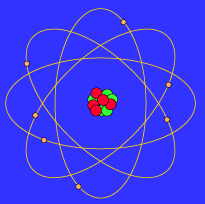Over the years the definition of oxidation-reduction has been broadened to include processes which involve combinations of atoms in which there is no clearcut transfer of electrons between them. An understanding of this behavior is provided by the concept of electronegativity. According to this concept, each kind of atom has a certain attraction for the electrons involved in a chemical bond. This "electron-attracting" power of each atom can be listed numerically on an electronegativity scale. Fluorine, which has the greatest attraction for electrons in bond-forming situations, is assigned the highest value on this scale. All other atoms are assigned values less than that of fluorine as shown.

Note the following trends:
1. Metals generally have low electronegativity values, while nonmetals have relatively high electronegativity values.
2. Electronegativity values generally increase from left to right within the Periodic Table of the elements.
3. Electronegativity values generally decrease from top to bottom within each family of elements within the Periodic Table.
When atoms react with each other, they "compete" for the electrons involved in a chemical bond. The atom with the higher electronegativity value, will always "pull" the electrons away from the atom that has the lower electronegativity value. The degree of "movement or shift" of these electrons toward the more electronegative atom is dependent on the difference in electronegativities between the atoms involved



No comments:
Post a Comment